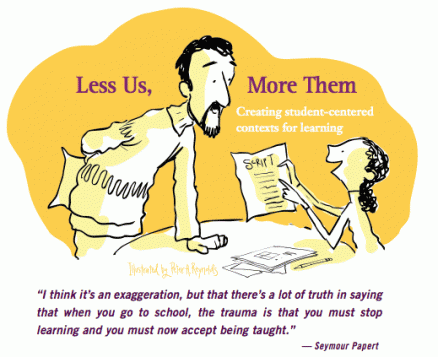This week in class, we reviewed several leadership theories through presentations that were facilitated by groups of three or four. It was really interesting how Lorayne set up this assignment and the presentations; we had to post our more "dry" content, in the form of an infographic or video, the weekend prior to class. The presentations were then focused on discussions around those leadership theories. I really appreciated this format as it was more student-centred and involved active rather than passive learning. I think I would have screamed if I had to sit through almost two hours of presentations! All of the groups did a really great job and I was engaged and eager to participate for the entire class.
It's great timing that this topic has come up as one of my goals in my annual learning plan is to focus on creating a more student-centred learning environment in my classroom. It's so easy to fall into the typical "chalk and talk" mode, especially when you are teaching IB chemistry! However, easy is not always best. In the 21st century, students have various types of personal devices that can look up information and find answers to straightforward knowledge-based questions. A lot of the "dry" content in my classes is being pushed outside of the classroom in favour of spending class time to focus on developing higher order thinking skills, similar to how these theory presentations were set up. It's amazing how much more engaged my students are, especially when the work we do inside the classroom is carefully designed to stimulate inquiry and problem solving (such as project-based learning). I guess what I'm trying to express here is that I can see parallels between my own learning and my professional practice. Sometimes student-centred teaching feels like a huge risk (this article here really sums it up quite nicely) and I find I'm constantly questioning whether I am doing the right thing. I'm grateful for this experience as it reaffirms that I am on the right track.


Comments
Post a Comment